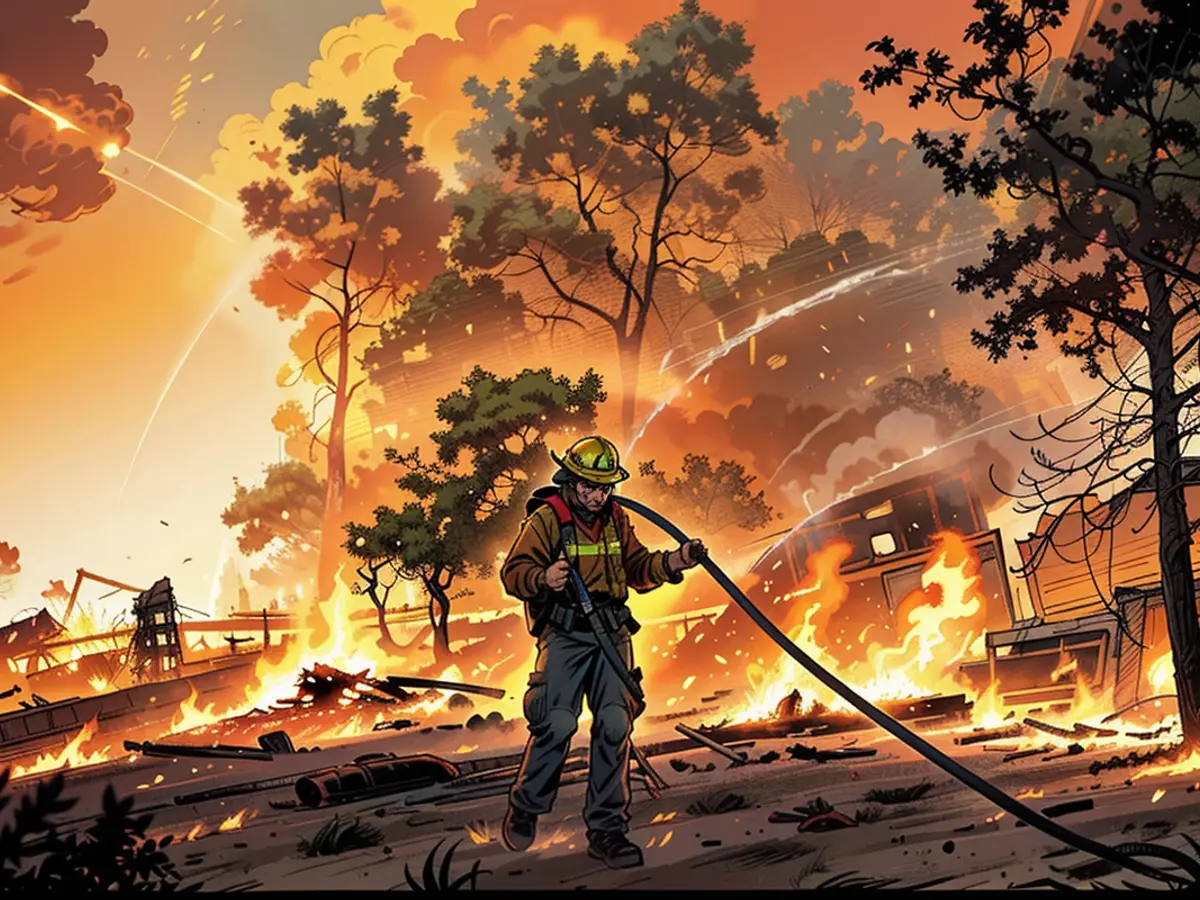Long-term exposure to wildfire smoke linked to increased risk of dementia diagnosis, new study finds
The findings come from data on over 1.2 million people 60 or older in Southern California from 2009 to 2019. The results, which are currently undergoing peer review, were reported Monday at the 2024 Alzheimer’s Association International Conference.
The researchers measured the impact of PM2.5 - air pollution particles that are 2.5 microns or smaller in diameter – from wildfire smoke as well as other sources, such as motor vehicles and factories.
They found a stronger link between PM2.5 from wildfires and dementia diagnoses. Specifically, the odds of someone exposed to wildfire smoke being diagnosed with dementia rose 21% for every increase of 1 microgram of PM2.5 concentration per cubic meter of air over a three-year average. In comparison, for other sources of PM2.5 pollution, the odds of a dementia diagnosis went up 3% for every increase of 3 micrograms per cubic meter of air over a three-year average.
The research also indicates that associations between wildfire smoke and dementia diagnoses are most pronounced among people from racially and ethnically minoritized groups and in high-poverty areas.
“There is quite a bit of prior literature that demonstrates an association between exposure to ambient air pollution and dementia, but there’s very limited research on how wildfire PM2.5, specifically, might be associated with dementia,” said the paper’s presenting author, Dr. Holly Elser, an epidemiologist and resident physician in neurology at the University of Pennsylvania.
“As wildfire events become more intense, more frequent, and occur in places outside of the Western US, we felt this was an important, specific source of air pollution to consider as a potential risk factor for dementia.”
Why is PM2.5 harmful?
Previous research has shown that pollutants with high levels of PM2.5 increase the risk of dementia, heart disease, asthma and low birth weight.
“When you breathe in [PM2.5], it actually gets absorbed into your bloodstream through your lungs,” said Dr. Maria Carrillo, chief science officer and medical affairs lead at the Alzheimer’s Association.
Breathing in toxins and particles such as PM2.5 has been shown in studies to increase amyloid in the brain, and these particles create unfavorable environments for our brain cells, contributing to inflammation and damage. Buildup of amyloid may play a role in the development of Alzheimer’s, a type of dementia, as it is associated with disruption of neuron function and cognitive decline.
Exposure to environmental shocks like wildfires can also uncover cognitive changes already underway due to the stressfulness of these events, according to Elser.
“That depression and anxiety stress could potentially unmask a neurodegenerative dementia or cognitive changes that were already there,” she said.
A more common form of pollution
The frequency of extreme fire weather days in California has more than doubled since the early 1980s, attributed to forces such as strong offshore winds and dry vegetation, and a changing climate, according to previous studies.
PM2.5 generated from wildfires accounted for over 70% of total PM2.5 exposure in California, according to a 2016 study of the state’s poorest air quality days from 2004-2009.
Wildfires also broke records around the world in 2023, with Canada experiencing the highest wildfire carbon emissions in decades and Greece witnessing the largest blaze in European Union history.
“Wildfire events will not only continue to be an important source of air pollution in the Western United States, but they’ll increasingly become important in parts of the US and world where they weren’t always commonplace,” Elser said, citing large wildfires in Canada and Hawaii in 2023.
What you can do
Individuals can protect themselves from air pollution, including wildfire smoke, by staying indoors on poor air quality days. Smartphone weather apps are an easy way to check this quality, according to Elser. When levels exceed 100, the air is unhealthy to breathe.
Home air filtration systems, including box fan air circulation, can also significantly improve indoor air quality, she said.
Get CNN Health's weekly newsletter
Sign up here to get The Results Are In with Dr. Sanjay Gupta every Tuesday from the CNN Health team.
However, not everyone is able to avoid the outdoors when the air quality is low. In that case, the authors of the new paper suggest using a fit-tested N95 or KN95 mask to reduce PM2.5 exposure.
“The social determinants of health are very much wrapped up in this. Recommendations around what to do to avoid [air pollutants] are harder for people that have a lower socioeconomic background and maybe can’t control their environment,” Carillo added.
Additionally, the study recommends that people with respiratory conditions like asthma or COPD, who are more susceptible to adverse effects of smoke, consult with a health care provider to prepare for wildfire conditions.
“In the past several years to decades, there’s been an increasing interest in identifying modifiable risk factors for dementia,” Elser said.
“Our paper underscores that [wildfire smoke] is potentially an important one for individual patients and their providers who are who are curious what steps they can take.”
The harmful effects of PM2.5, as seen in previous research, include an increased risk of dementia, heart disease, asthma, and low birth weight. Moreover, the study suggests that associations between wildfire smoke and dementia diagnoses are most pronounced among people from racially and ethnically minoritized groups and in high-poverty areas.








